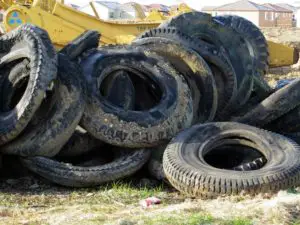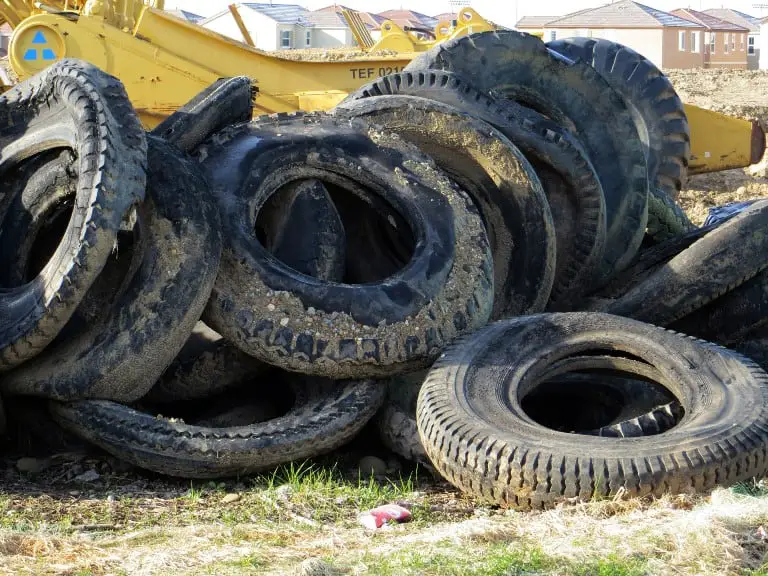
Have you ever thought about what happens to tires once they have been sent to the tire recycling center? Well, once they’ve reached the required volume, they get loaded onto trucks and taken to processing centers. After their arrival, they are cut/shredded into 2 inch pieces, which get processed using one of two systems: Mechanical and Cryogenic.
Mechanical Break Down of Tires
The Mechanical system grinds up scrap tires into small chips using the ambient process. Typically, the shreds are put into one granulator fitted with screens that help in the determination of the product size.
Cryogenic Break Down of Tires
With the Cryogenic system, tires are frozen at very low temperatures, which help to break them into different sizes. Afterwards, they are super cooled with liquid nitrogen, becoming very brittle. They are then passed through a hammer mill, which breaks them into even tinier particles.
Removal of Metal Wires and Steel
Steel is removed using magnets and fibers are separated with air classifiers. Usually, it’s sent off to rolling mills to aid in the manufacturing of new steel. Screening is used to make sure there are no more wires, or anything thing else that could be harmful left in the material. The leftover rubber is often sold as rubber mulch, or used for playground turf. Before it’s shipped off, it goes through a cleaning stage. Water, and other cleaning products are used to ensure that it is thoroughly washed.
Shipment to Manufacturers
It is then packed and shipped to various plants like, shoe and athletic/recreational manufacturers. Other uses include molded and extruded products, including mats, and bumpers. Ground rubber is also added to asphalt binder to improve highway performance characteristics, which include how long the road will last. It can also be used in the manufacturing of new tires, and even colored mulch in landscaping applications.
Safety of Recycled Tires
Many people are concerned with the safety of using recycled rubber on playgrounds. However, according to CalRecycle, there are no toxicity issues that would preclude using ground rubber on playground equipment. In fact, there are many benefits to using it, such as durability. Rubber is flexible, resilient and makes a great outdoor cushioning material.
Scrap Tires Used for Alternative Energy
Scrap tires can certainly be an environmentally compatible alternative energy resource when used properly. They’ve been used for energy in Japan, Europe, and the United States since the 1970s.This is accomplished through the usage of pyrolysis, which is subjecting plastic and tire to high temperatures of 400-450 degrees Celsius in the absence of oxygen to change their chemical composition. This causes the break down into smaller molecules that eventually vaporize, which can be burned directly to produce power or condensed into an oily liquid, generally used as fuel. When performed correctly, the tire pyrolysis process is a clean operation that creates few emissions or waste, but concerns about air pollution due to incomplete combustion, as is the case with burning tires have been documented. Beyond that, tires can be used as construction materials; entire homes can be built with whole tires filled with dirt and concrete. They can also be used as barriers for collision reduction, erosion control, and even artificial reefs.
Whatever their usage after they are removed from your vehicles, they are certainly no good, nor are desired in landfills, due to their consumption of valuable space. They can also trap methane gases, which cause them to bubble to the surface and damage landfill liners. So, make sure to “keep track” of where your old tires go, and keep recycling other products, as well!

